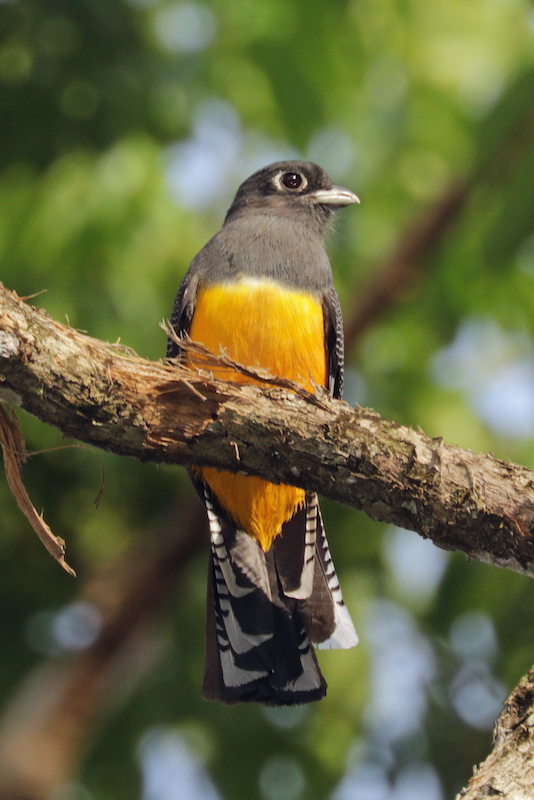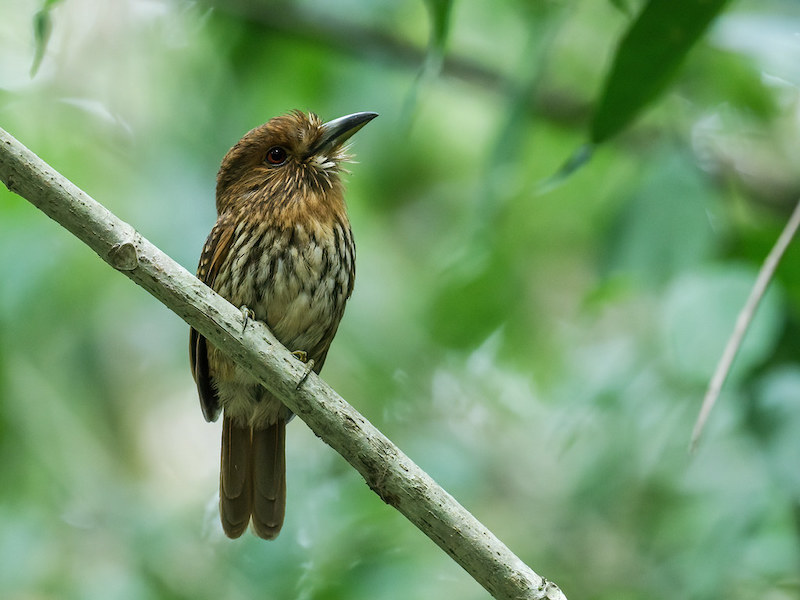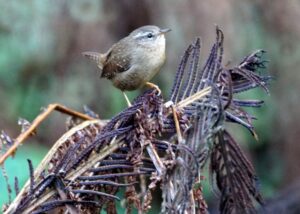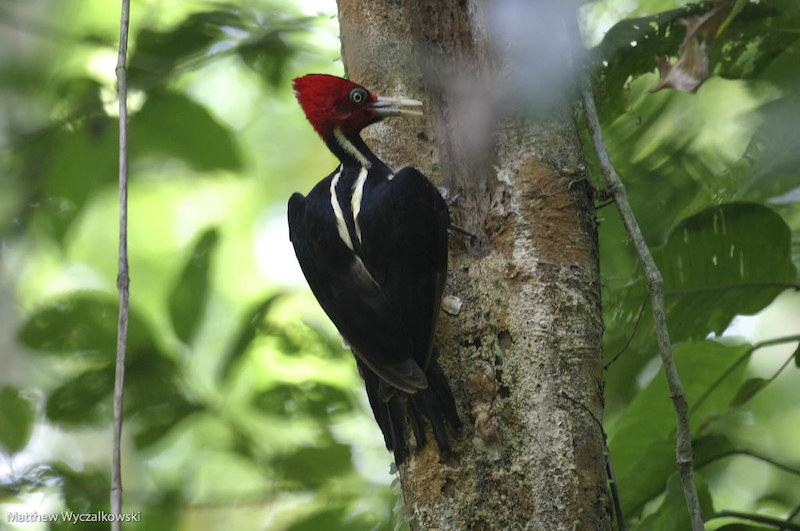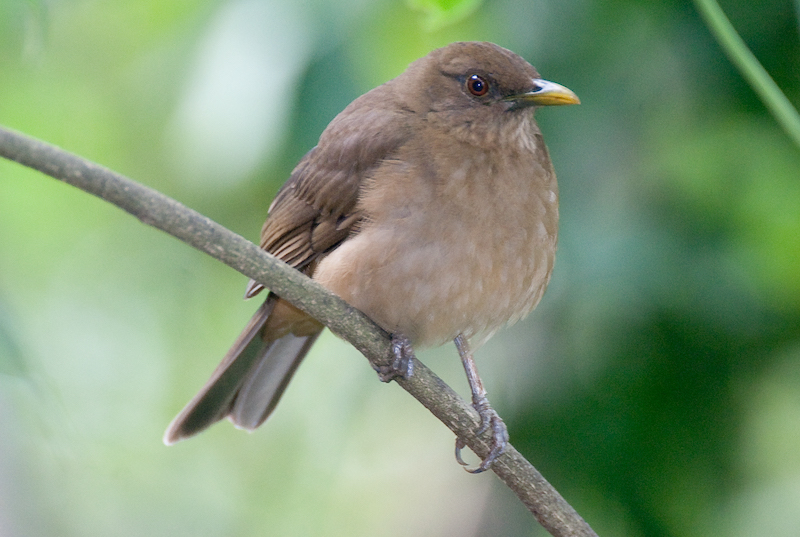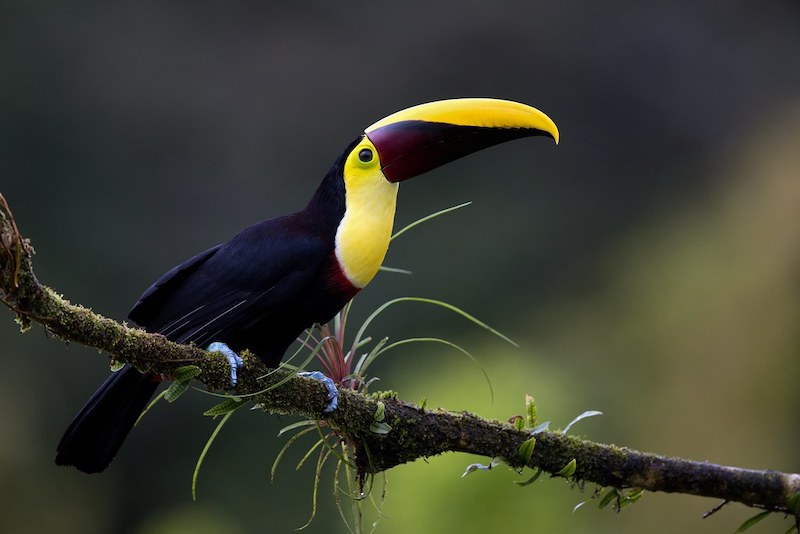The most common birds of Carara National Park
Carara National Park is a must-visit destination in Costa Rica. The park boasts a unique transition forest, making it the only place in the Central Pacific with diverse flora and fauna, including typical species of dry and humid forests. Birdwatchers will find the park to be an exceptional site for birdwatching.
The park’s location and accessibility make it an ideal destination for a one-day visit. Visitors can easily reach the park from Route 34 using their own car, rented car, or by public transport. Therefore, if you are looking for a place to visit in Costa Rica, Carara National Park should be at the top of your list.
Let’s see our list of the most common birds in this national park.
Black-hooded Antshrike (Thamnophilus bridgesi)
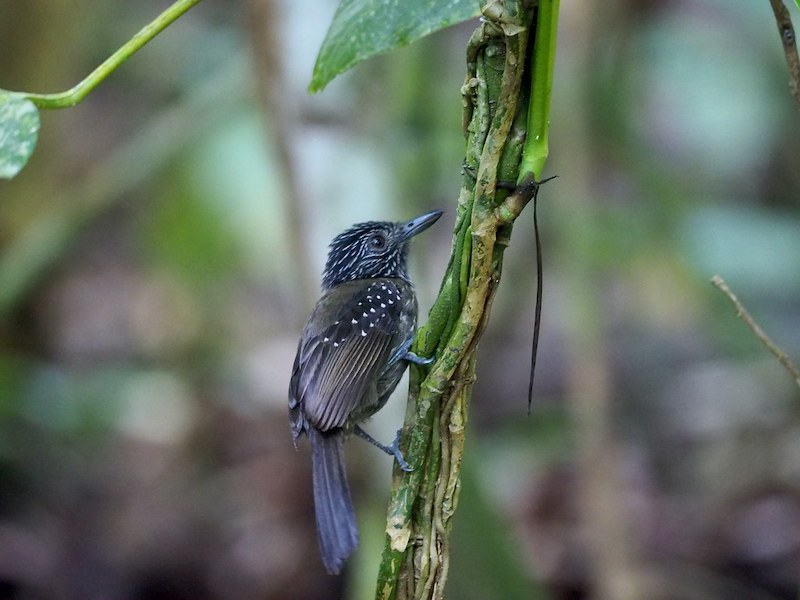
Antshrikes have large, flat heads and large, hooked bills; they often angle their tails downward, below the line of the body. Male Black-hooded is mostly black with a slightly paler belly; note small white spots on the shoulder. The female is paler gray overall with whitish streaking on the head and breast. Most often seen in pairs in the understory of forest and edges. Follows mixed flocks. Listen for an accelerating chuckle with a longer raspy note at the end.
Slaty-tailed Trogon (Trogon massena)
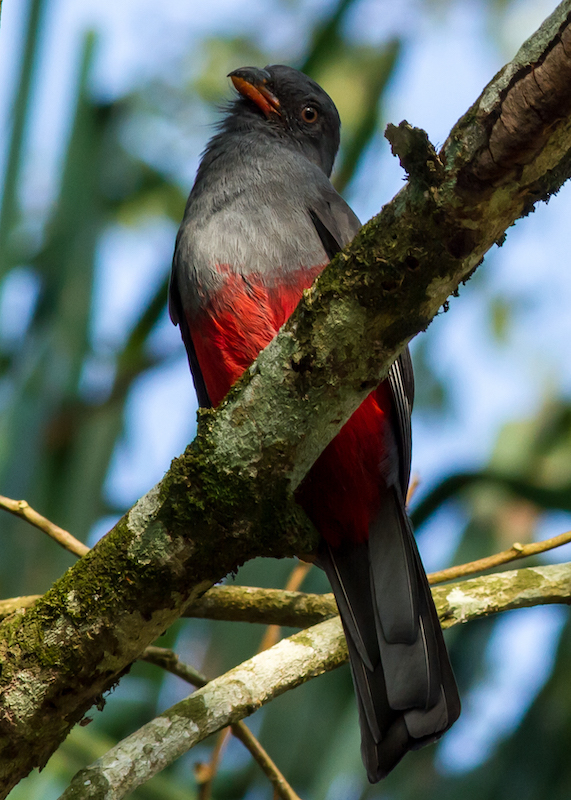
Large, red-bellied trogon of humid tropical lowlands. Favors rainforest interiors, but is also found at edges and around clearings, mainly perched quietly and in an upright position at middle to upper levels in larger trees. The lack of a white band above the red belly and entirely dark gray undertail (or with a few fine white bars at the sides on immatures) separate Slaty-tailed from other red-bellied trogons. On males also note the stout orange bill and orange eyering. Digs its nest in arboreal termite nests.
Gartered Trogon (Trogon caligatus)
Relatively small and compact yellow-bellied trogon of tropical lowland forest, mainly in humid areas. Perches at mid to upper levels, often high in the canopy. Male has yellow eyering, female has broken white eyering; both sexes have narrow black-and-white barring on the underside of the tail. Female Gartered has white barring on its closed wings which female Black-headed Trogon lacks. Digs its nest in large arboreal wasp nests. Used to be known as Violaceous Trogon.
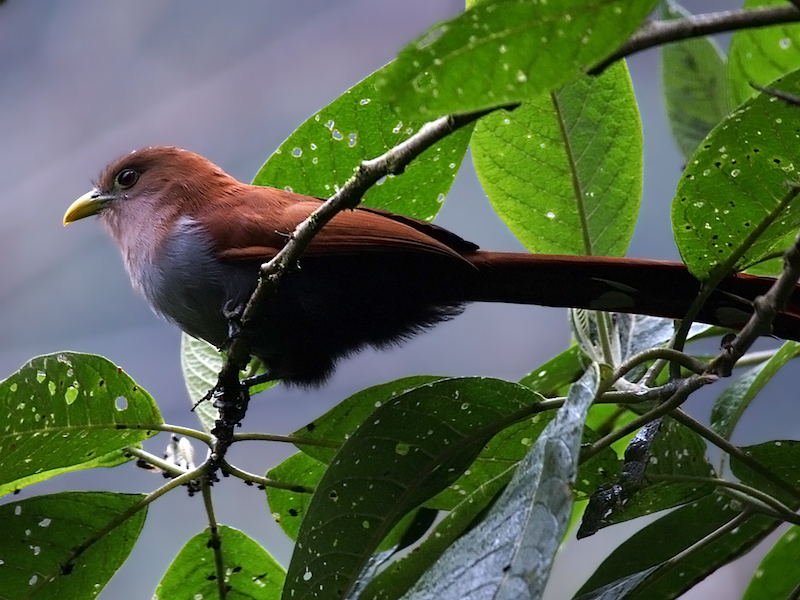
Squirrel Cuckoo (Piaya cayana)
Very striking and long-tailed bright rusty cuckoo, widespread in tropical lowlands and locally up into foothills. No similar species in Mexico and Central America. Occurs in a wide range of wooded and forest-edge habitats. Mostly forages stealthily at mid-upper levels in trees, which can be surprisingly difficult to see. Often seen swooping across roads and eliciting a ‘wow’ reaction. The underside of white-tipped tail feathers is rusty overall in West Mexico, and blackish overall in other areas.
White-whiskered Puffbird (Malacoptila panamensis)
Plump brown bird of shady understories in humid evergreen forest of tropical lowlands. Found singly or in pairs, perched quietly at low to middle levels. Often sits still for long periods and is easily overlooked. Note the stout bill, reddish eyes, streaky underparts, bushy white whiskers, and finely dappled whitish to buffy upperparts.
Riverside Wren (Cantorchilus semibadius)
Medium-sized wren with rufous upperparts and bold black-and-white barred underparts. Complex black-and-white face pattern. Sexes alike. Found in pairs or small groups, foraging in the lower levels of forests and shrubby edges.
Pale-billed Woodpecker (Campephilus guatemalensis)
Large red-headed woodpecker of tropical forest in lowlands and foothills; also in pine-oak forest of lower mountain slopes. Redhead (with black forehead and throat on female) is often more squared than Lineated. Juvenile Pale-billed has a black face with white cheek stripe, very like Lineated, but soon attains redhead and usually travels with adults. All plumages of Pale-billed have a white V on the back, compared to Lineated. Loud double-rap drum is distinctive; drums in West Mexico are often longer, but still very slow-paced.
Clay-colored Thrush (Turdus grayi)
Drab, uniformly brown thrush with a slightly warmer belly. Dull yellowish bill and very faint streaks on throat. Very common and widespread throughout Central America; limited U.S. range. Found in a variety of shrubby wooded habitats, towns, and parks. Unique color and blandness make this rarity unlikely to be confused with other species. Tends to stay on the ground or in low vegetation, either singly or in pairs. The song is a varied series of phrases similar to a mockingbird.
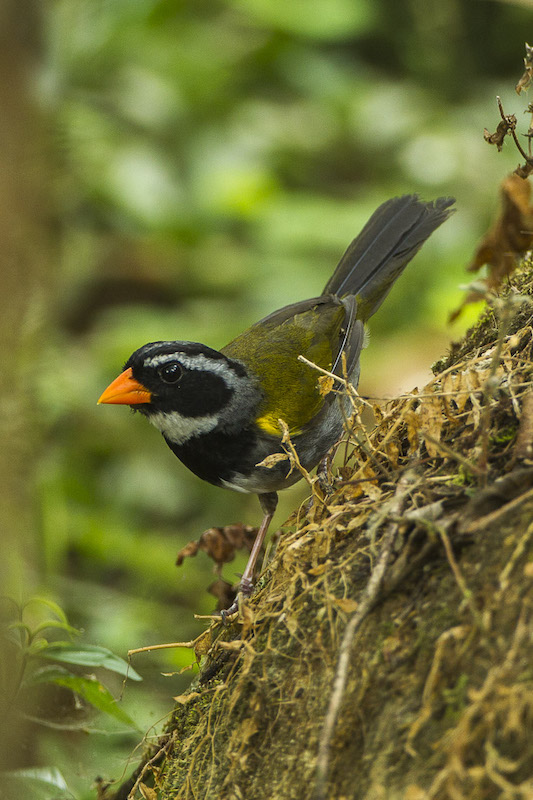
Orange-billed Sparrow (Arremon aurantiirostris)
Boldly patterned, rather chunky sparrow of humid evergreen forest and edge in tropical lowlands. Usually on or near the ground in shady understory and thickets; often in pairs. Bright orange bill virtually glows in the dark; also note the bold black-and-white head pattern and black chest setting off the white throat. No similar species in its lowland range.
Yellow-throated Toucan (Ramphastos ambiguus)
Large conspicuous bird with oversized bill. Mostly black overall with a yellow throat and face. Note the bicolored bill: dark below and yellow above. Found in pairs or small groups, often parading through the canopy in search of fruit. Sometimes perches very obviously at the top of a tree. Favors forested areas, but can also be found in gardens and edges. Yelping call helps distinguish from similar-looking species.

